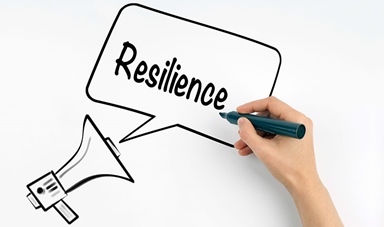Loading component...
At a glance
This article was originally published in July 2019.
After 20 years of training people in resilience strategies, Michael Licenblat has come up with a pretty neat analogy to describe what he does.
“When you cut yourself, the blood is the symptom whereas the cut is the source. People who experience stress are looking for a really good Band-Aid. Resilience will give you this, but it also helps you to understand how to avoid getting cut.”
Licenblat, whose background is in psychology and natural therapies, sees his role as not simply damage limitation. He aims to give people tools to help them thrive in today’s highly pressurised environments.
By building people’s “inner strength”, Licenblat has witnessed how people adapt better to the fast pace of change while maintaining a sense of wellbeing and balance in their lives.
Heavy workloads, unrealistic expectations
By the time organisations contact Licenblat’s company Bounce Back Fast, they are generally contemplating one of two scenarios. The first is after staff have gone through the wringer, experiencing heavy workloads with high and often unrealistic expectations.
Employees are feeling emotionally and physically drained, disengaged from work and looking for strategies on how to cope better.
“Resilience building is often interpreted as ‘How do I develop a thicker skin to bullet-proof myself against stress?’.” While that is useful, says Licenblat, it’s not sustainable.
The other scenario is what he calls “the pre-emptive strike”. When a business sees a large wave coming, perhaps signalling technological changes and pressures that haven’t been experienced, managers want to prepare their people to adapt and maintain productivity and engagement when the wave hits.
Both these scenarios can apply to accountancy, he says, and are the result of professionals having to do more in less time and with fewer resources. The expectation that people are always on tap, and have their attention pulled in multiple directions, often means the quality of work suffers, despite the fact they may be working longer hours.
Dealing with pressure
Turning tension and pressure into energy and enthusiasm is the foundation of resilience training. Licenblat has strategies for how to develop mental grit, as well as how to make good choices about where to direct focus and for how long, and how to maintain calm when all around is chaos.
The more people can be trained to recognise pressure triggers, the better they are able to thrive, he says.
As to whether men or women cope better under pressure, Licenblat prefers to avoid stereotypes. However, he has observed one difference in how genders process pressure. Men will typically be more tunnel visioned and less flexible in how they approach problems, whereas women are hyper aware of everything they must manage, and the stress of the overload can impair their ability to be productive. For both, he says, the importance of being able to let go of what you can’t control is crucial.
Once key resilience strategies are in place, the question of how you measure their effectiveness arises. In terms of costs saved and productivity gained, can they even be measured?
The short answer is yes and no, he says. “If we were to say all these things are going to improve and measure them prior and after, the scale would be quite broad and it will vary from person to person.
“For some people when their resilience skills improve, they take more initiative, they engage better, they have more energy. But the truth is, it’s really hard to measure that.”
For other people, change simply takes time. A half-day resilience building program may only generate results in behavioural change three months later, after strategies have been established. Making an organisation more resilient isn’t going to happen overnight; ideally, he says, it’s a journey that everyone goes on together.
Key tips for building team resilience:
- A head down, tail up approach without time for reflection leads to burnout.
- Identify stress triggers that impact focus. Understand how the change in pace, the rate of work, and the increase in expected output affect focus.
- Be adaptable. Consider how you are going to evolve to stay relevant. How you have performed in your role to date may be different to how you are going to perform that role over the next five years in order to stay valuable to the business. That will require a change of thinking about what your role means, and adapting your skills to the demands placed on you.
- Have an open mindset and take constructive feedback.
- An ability to embrace failure will determine how well you grow and learn in a high-pressure environment. A negative relationship to failure or not allowing teams to innovate for fear of failure can stunt growth.

